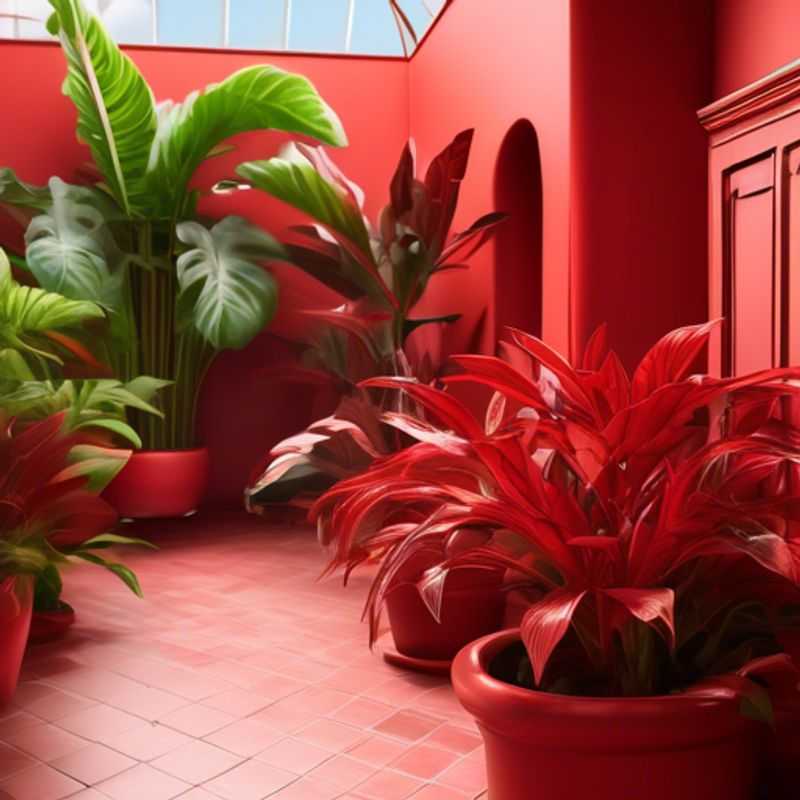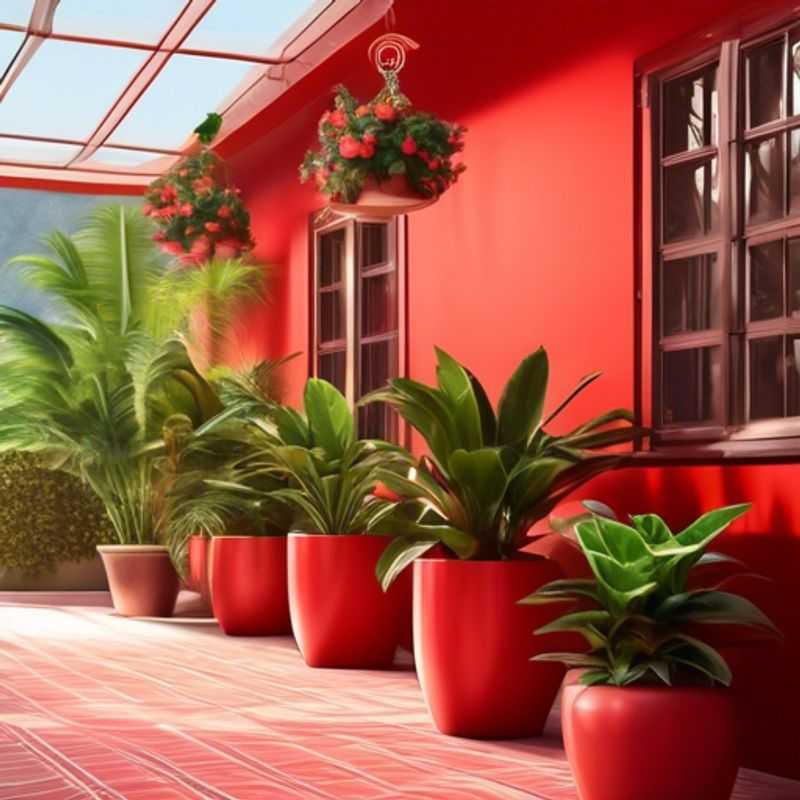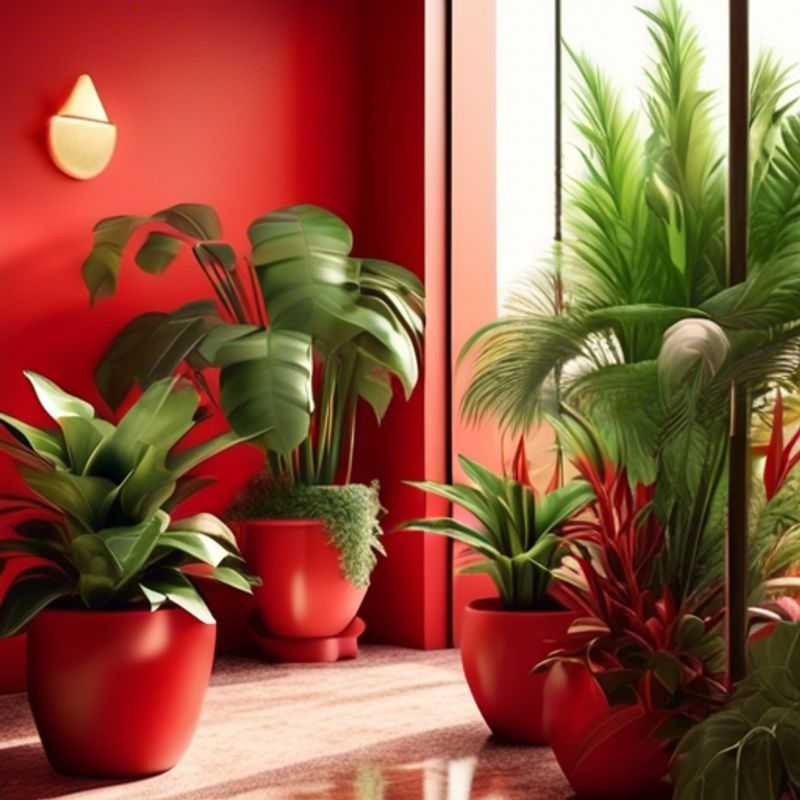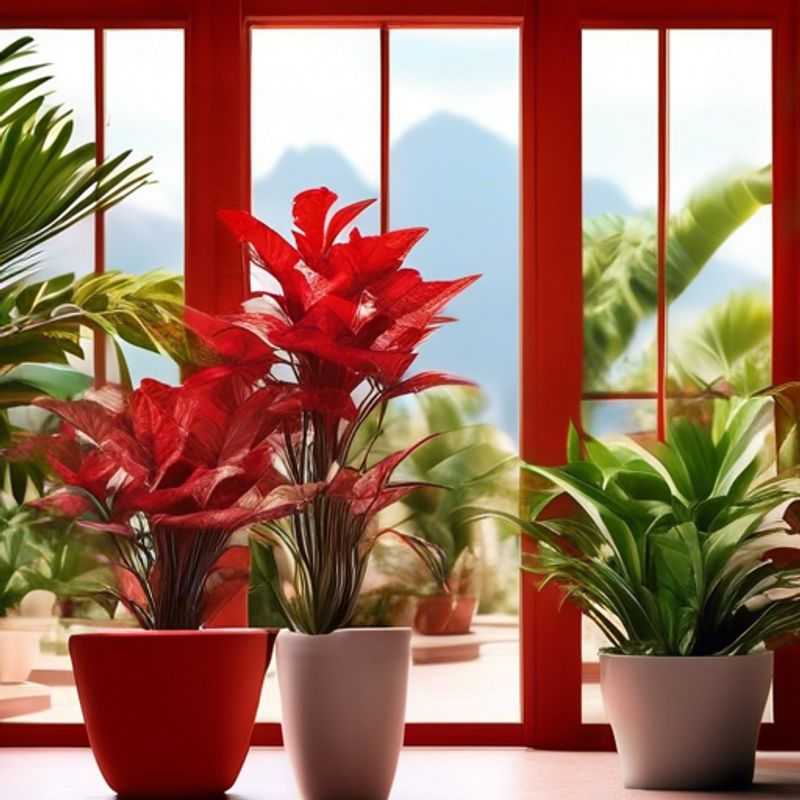Top 4 Things to Know Before Buying Red House Plants

The 4 Must-Knows for Red Houseplant Success: Sunlight, Soil, Watering, and Feeding
Hey there, plant enthusiasts! Looking to add a splash of vibrant red to your home? Red houseplants are a fantastic choice, but before you bring one home, there are a few key things you need to know to ensure it thrives.
1. Light is Key: Red houseplants, like most of their leafy companions, need bright, indirect sunlight. Think of a spot near a window where the sun's rays are filtered through a curtain or shade. Direct sunlight can scorch their delicate leaves, so a little indirect light is the way to go.
2. Drainage is Crucial:

Red Houseplants: The Bright Indirect Light They Crave
Red house plants, known for their vibrant foliage and air-purifying qualities, thrive in bright, indirect sunlight. This means they need a good amount of light but not direct sun, which can scorch their leaves.
Ideally, place your red house plant near a window that receives morning or late afternoon sun. Avoid placing them in direct sunlight, especially during the hottest part of the day. If you notice leaves turning yellow or brown, it might be a sign of too much sun.
Consider these factors when choosing the right spot for your red house plant:
• Window Direction: East-facing windows offer morning sun, which is ideal for many house plants, while west-facing windows receive afternoon sun, which can be harsher. South-facing windows offer the most light but can be too intense.
• Room Brightness: Evaluate the overall brightness of the room. A bright, airy room is usually a good choice, while a dimly lit room may not provide enough light.
• Seasonal Changes: Be mindful of seasonal changes in sunlight levels. During winter, you might need to supplement with artificial lighting, especially if your plant is near a south-facing window.
With proper lighting, your red house plant will thrive and add a splash of color to your home.

Well-Draining Soil: The Key to Healthy Roots
Well-draining soil is crucial for the health of many plants because it prevents root rot, a common problem that can kill plants. Root rot occurs when roots sit in waterlogged soil, which deprives them of oxygen and makes them susceptible to fungal and bacterial infections.
Here's why well-draining soil is so important:
Oxygen: Plants need oxygen to survive just like we do, and their roots get oxygen from the air spaces in the soil. Waterlogged soil fills these spaces, suffocating the roots.
Nutrient uptake: Roots need to absorb nutrients from the soil, and waterlogged soil hinders this process. It can also create anaerobic conditions, which can make nutrients less available to the plants.
Disease: Root rot is caused by various fungi and bacteria that thrive in damp, oxygen-deprived environments. They attack weakened roots and can quickly spread throughout the plant.
To ensure your plants have well-draining soil, you can:
Add amendments: Compost, bark, and other organic matter can improve drainage by increasing the soil's porosity.
Choose the right pot: Ensure pots have drainage holes and are not too large, which can retain too much water.
Avoid overwatering: Water only when the soil is dry to the touch.
Remember, maintaining good drainage is an important step in keeping your plants healthy and thriving. If you're unsure about your soil's drainage, you can consult a local gardening expert or conduct a simple drainage test.

When to Water Your Red House Plants: The Top Inch of Soil Rule
When it comes to watering your red houseplants, the rule of thumb is to wait until the top inch of soil is dry. This means sticking your finger about an inch into the soil. If it feels dry, it's time to water. If it's still moist, wait a little longer.
Red houseplants are actually quite drought tolerant, so don't worry if you forget to water them for a day or two. However, overwatering is a much bigger problem for these plants. Overwatering can lead to root rot and other issues.
The frequency of watering will also depend on factors like the size of your plant, the type of pot it's in, and the amount of light it receives. Generally speaking, you should water your red houseplant about once a week during the growing season (spring and summer). During the winter months, you can reduce watering to once every two weeks or even less.
Remember to use lukewarm water and allow excess water to drain out of the pot. Don't let the plant sit in water, as this can lead to root rot. And be sure to use a well-draining potting mix.

Fertilizing Red House Plants: A Seasonal Guide
Red houseplants, known for their vibrant colors, thrive with regular fertilization. However, over-fertilizing can be detrimental, leading to root burn and stunted growth. During the growing season, which typically spans from spring to fall, a balanced fertilizer application every 2-3 months is ideal. Use a liquid fertilizer specifically designed for houseplants, diluting it to half strength. This helps prevent over-fertilization and ensures gradual nutrient absorption. Always water the plant thoroughly before and after fertilization to avoid root damage.
Remember, observing your plant's condition is key. Look for signs like new growth, vibrant colors, and strong foliage. If these are evident, fertilization is likely sufficient. Conversely, if your plant shows signs of yellowing or stunted growth, reconsider the frequency or concentration of fertilization.
During the dormant season, when growth slows, fertilization can be reduced or halted entirely. This allows the plant to rest and prepare for the next growing season.
